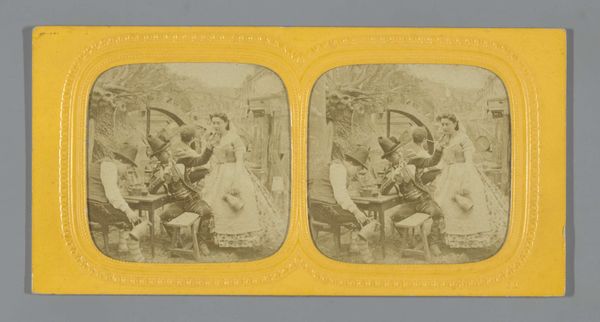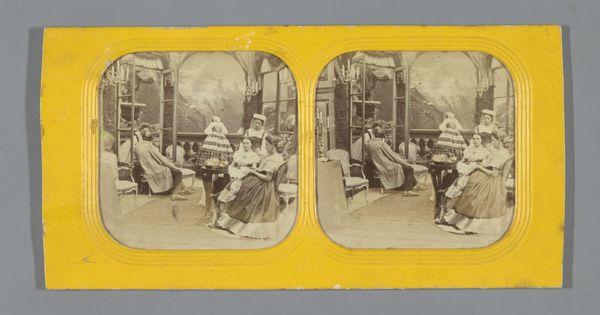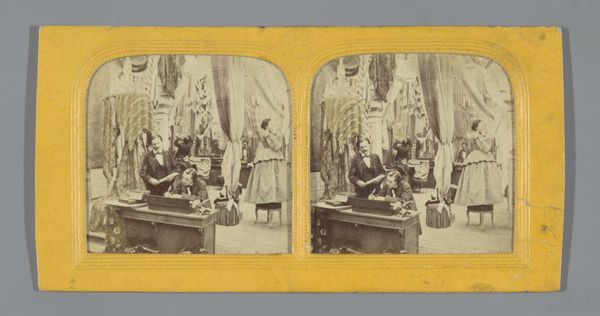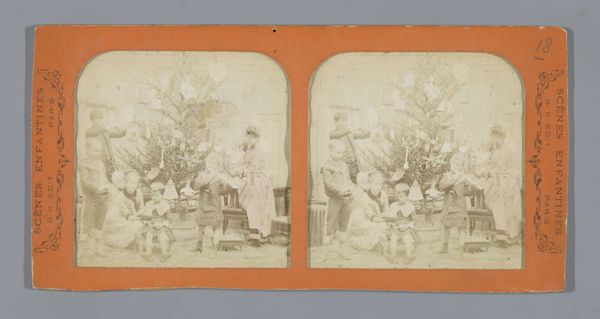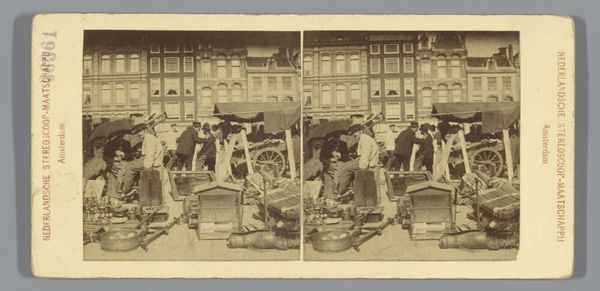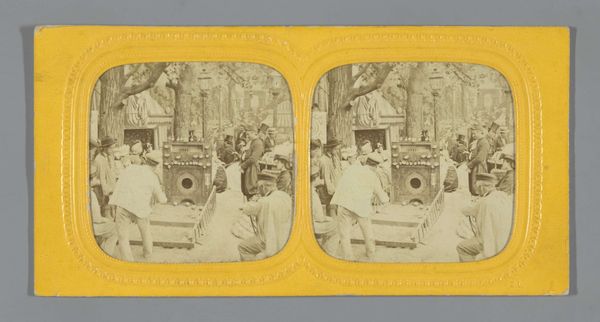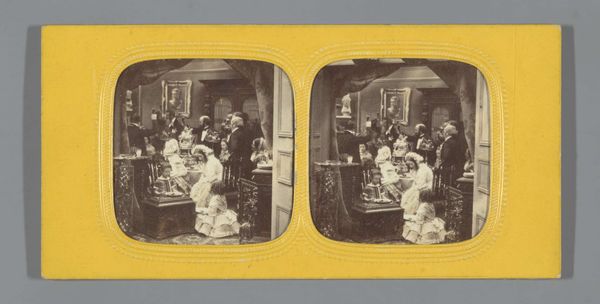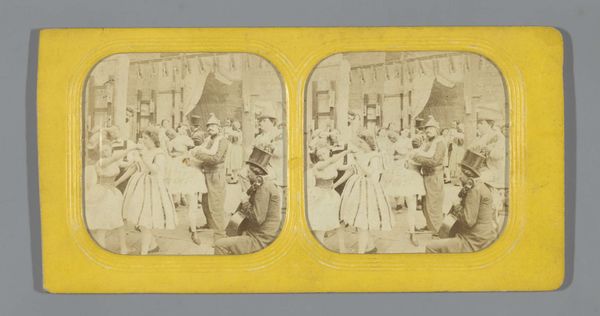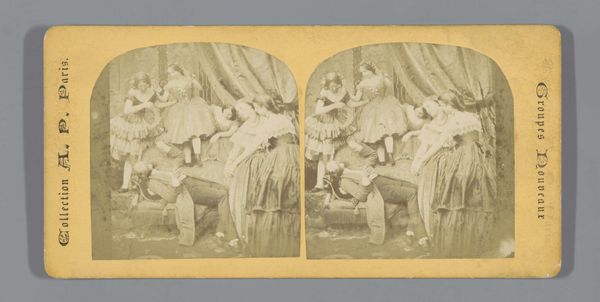
photography
#
portrait
#
photography
#
genre-painting
Dimensions: height 88 mm, width 177 mm
Copyright: Rijks Museum: Open Domain
Editor: So, here we have an early photograph, "Keramist in atelier met jonge vrouw in klederdracht," which roughly translates to "Ceramist in the studio with a young woman in traditional dress." It's by Anatole Pougnet, dating from around 1855 to 1865. The scene feels so posed, almost like a tableau vivant. I am curious: how would you interpret this piece, especially given its time period? Art Historian: This piece presents a fascinating glimpse into the burgeoning art world of the mid-19th century. Observe the framing: the posed figures within a workshop setting evoke a staged genre painting, a common practice used within early photography. Notice the traditional dress of the young woman, she almost feels emblematic - but of what, exactly? Editor: I suppose, an idealised image of rural life, of heritage. Like a symbol of simpler times that were being challenged during industrialisation? Art Historian: Precisely! And see how that notion plays against the very modern medium of photography? Photography sought to capture “reality,” yet here, reality is being carefully constructed. Consider the placement of the ceramic objects - these too carry symbolic weight, suggesting craft, artistry, even an allusion to classical antiquity. It would be interesting to discover, if one could, the stories of the models as they step outside these roles and resume being people. Do you suppose those representations remain attached to one's cultural understanding and, thus, to identity? Editor: Definitely, It makes you think about the relationship between photography, identity, and how we curate the stories we tell about ourselves and others, whether now or then. The staged reality hints that representation is as important as reality, don't you agree? Art Historian: Absolutely. Ultimately, we're left with a beautiful, slightly unsettling artifact - one that reveals as much about its era's aspirations and anxieties as it does about its subjects. Thanks for giving me so much to think about, these sorts of glimpses remind one how consistent and strange the experience of art, history, and human connection can be! Editor: Thanks! I hadn't really thought about photography as being "staged," but that completely reshapes how I see early photographs.
Comments
No comments
Be the first to comment and join the conversation on the ultimate creative platform.
